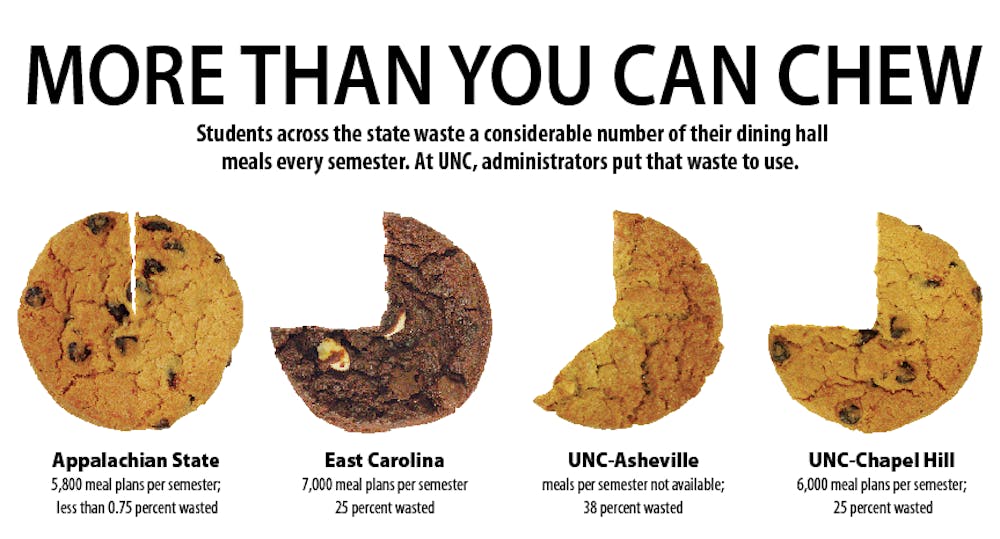Sophomore Erica Roberson thought she had finally found the right meal plan.
But at the end of the fall semester, she was surprised to find more than a quarter of her 160 meals had gone unused.
Roberson is a part of a larger trend. At UNC-CH, 25 percent of all meals bought through campus dining plans are wasted each semester, a model that finds mixed comparisons at other UNC-system schools.
“There should be some kind of block plan, maybe even lower than 120 meals, because the lowest they have is the commuter plan with 50 meals, which is too little,” Roberson said.
Money from wasted meals subsidizes Carolina Dining Services’ prices and pay for overhead expenses and staff, said Scott Myers, director of dining and vending.
Carolina Dining Services, which offers meal plan options to on-campus and commuter students, sells about 6,000 meal plans each fall.
The large percentage of unused meals can be attributed to students buying meal plans that don’t match their lifestyles, Myers said.
Money from unused meals also help pay for debt owed by Carolina Dining Services, which currently has $30 million in outstanding debt charges due to facility upkeep and renovations at Lenoir and Rams Head dining halls.
If students were to eat every meal they purchased, meal plan prices would be higher, Myers said.




